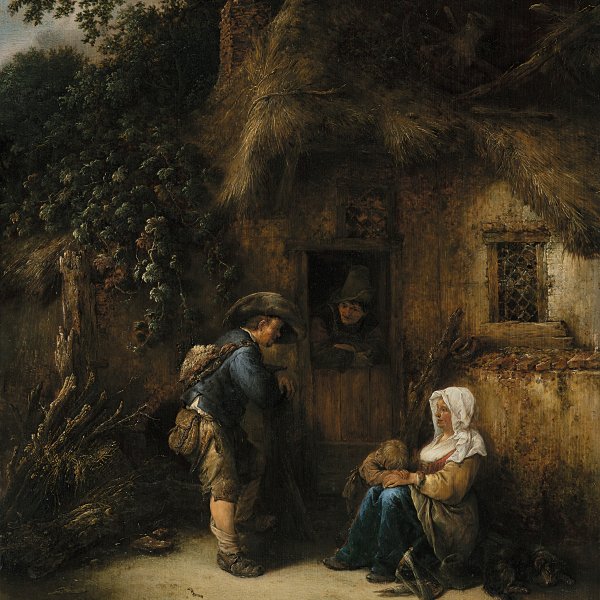Isack van Ostade
Haarlem, 1621-1649
Isack van Ostade was born in Haarlem in 1621, younger son of Jan Hendrick van Eindhoven, a linen weaver, and younger brother of Adriaen van Ostade. Little is known of his training but Houbraken states that he learned from his elder brother. In the early years of his career Isack painted genre scenes very similar to the interiors in tones of brown and grey produced by his brother at that date. In the early 1640s he began to specialise in compositions that combined genre motifs and landscape, and from 1642 interiors are not be found in his oeuvre. In 1643 Isack van Ostade entered the gild of Saint Luke in Haarlem and that same year began to adopt themes found in the work of Pieter van Laer, a Dutch painter who specialised in scenes of street life among the humbler social classes. Isack van Ostade’s style underwent a complete transformation and he made use of the delicate technique used by the Italianate painters to depict figures and buildings. This is evident in Tavern with Horse at a Drinking Trough (Rijksmuseum, Amsterdam). Scenes of travellers resting at the door of an inn became a recurring motif in his work, as did winter landscapes, in which the influence of painters such as Jan van Goyen and Salomon van Ruysdael is evident.
Isack van Ostade also collaborated with other artists, painting figures in their compositions, particularly for Jacob van Mosscher. He died in Haarlem in 1649 at the early age of twenty-eight. Many of his unfinished works were completed by his brother Adriaen. Despite his brief career of only a decade, Isack van Ostade exercised a considerable influence on the work of other painters including Claes Molenaer, Cornelis Decker, Roelof van Vries, Jan Wijnants and Johannes Oudenrogge.
Isack van Ostade also collaborated with other artists, painting figures in their compositions, particularly for Jacob van Mosscher. He died in Haarlem in 1649 at the early age of twenty-eight. Many of his unfinished works were completed by his brother Adriaen. Despite his brief career of only a decade, Isack van Ostade exercised a considerable influence on the work of other painters including Claes Molenaer, Cornelis Decker, Roelof van Vries, Jan Wijnants and Johannes Oudenrogge.





